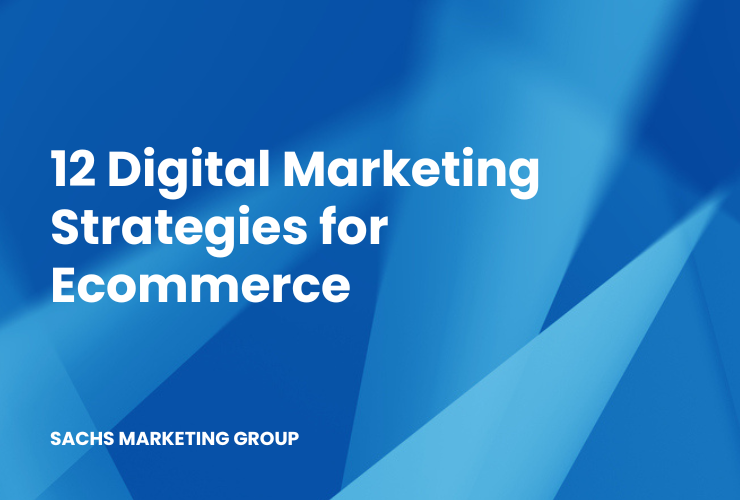There are several digital marketing strategies for e-commerce that can effectively drive traffic, increase conversion rates, and boost sales. From search engine optimization to influencer marketing, there are myriad ways to engage consumers and promote your products or services.
The rise of online shopping has made e-commerce more competitive than ever, creating a pressing need for effective digital marketing strategies for e-commerce.
Perhaps you’re feeling the pinch, struggling to keep up with competitors, or simply finding it challenging to convert digital traffic into paying customers. The good news is, you’re not alone, and there are proven strategies that can help you succeed.
In this article, you will discover 12 digital marketing strategies for e-commerce that will elevate your online presence, drive customer engagement, and ultimately increase your sales.
Overview
Digital Marketing Strategies for E-commerce
Successful e-commerce businesses have one thing in common: they use a multi-faceted digital marketing approach to draw customers. The right combination of strategies can significantly impact your online business.
Here are 12 digital marketing strategies for e-commerce that can take your business to new heights.
1. Use SEO to Increase the Visibility of Your Products Organically
SEO (search engine optimization) is vital for e-commerce businesses aiming to boost organic reach. The goal is to rank higher in search engine results for queries related to your offerings. Organic traffic often converts better as users are already searching for your products.
Start with keyword research to find terms potential customers use. There are many great tools for keyword research, but Google Keyword Planner is a great place to start. Integrate these keywords into your product titles, descriptions, and meta descriptions. Also, make your site easy to navigate; every product should be within a few clicks from the homepage. Regularly monitor your keyword performance and adapt as needed.
2. Leverage Upsell and Downsell Opportunities On Your Website
Upselling and downselling are effective online sales tactics. Upselling suggests a more expensive but superior version of a chosen item, while downselling offers a cheaper alternative. For instance, if a customer selects a basic smartphone, upsell by showing a pricier, feature-rich model.
Place upsell and downsell options strategically on product pages and during checkout. Use analytics to make these suggestions more targeted. For example, consider the customer’s behavior and previous purchases. This not only enhances the customer experience but also raises your average transaction value.
3. Reduce Abandoned Carts During Checkout
A common challenge for e-commerce businesses is the dreaded abandoned cart. Statistics suggest that the average cart abandonment rate can be as high as 70%. This not only represents lost revenue but also wasted marketing efforts. To mitigate this, optimize your checkout process to be as seamless and straightforward as possible.
Use tactics like one-click checkout, guest checkout options, and clear calls to action. Also, offer multiple payment methods and ensure that shipping costs are transparent from the beginning. Consider using cart abandonment emails or retargeting ads to remind potential customers what they left behind. Implementing these changes can substantially reduce the rate of abandoned carts and increase your conversion rates.
4. List Your Products on 3rd-Party Marketplaces
Expanding your product listings to third-party marketplaces like Amazon, eBay, or Etsy can dramatically widen your reach. These platforms already have a large, built-in customer base looking for products to buy. Leveraging this reach can lead to a direct increase in sales.
The strategy here is to select the most appropriate platform for your product type. For example, if you’re selling handmade crafts, Etsy might be a better fit than Amazon. Once chosen, optimize your product listings on these platforms just as you would on your website—high-quality images, clear descriptions, and strategic keyword use are essential. These platforms also provide analytics to help you understand your customer base better.
5. Maximize Visibility with PPC Advertising
Pay-per-click (PPC) advertising can offer instant visibility and traffic. Platforms like Google Ads or Bing Ads allow you to create ad campaigns that display your product at the top of search results for specific keywords. The beauty of PPC is that you only pay when someone clicks on your ad, making it a cost-effective strategy.
Creating a successful PPC campaign requires research and ongoing adjustments. Use A/B testing to try out different headlines, descriptions, and landing pages. Monitor your campaigns closely to understand the return on investment and to adjust your bidding strategy as needed.
6. Reach A Wider Audience with Influencer Marketing
Influencer marketing has become a go-to strategy for many e-commerce businesses. Influencers, with their cultivated social media following, can provide a trustworthy voice that speaks directly to potential buyers.
Select influencers who align with your brand and whose followers match your target demographic. Once you’ve identified suitable influencers, you can approach them for sponsored posts or reviews. Remember, authenticity is key in influencer marketing; the partnership should appear organic to the audience. Track engagement and conversion metrics to gauge the success of your influencer campaigns, and adjust your strategy as you collect more data.
7. Share Product Demonstrations on TikTok
TikTok isn’t just for dance challenges and funny videos – it’s also a powerful platform for showcasing your products in action. So, if you’ve been ignoring the platform, it’s time to change and expand your understanding of how to use TikTok for your business. Sharing product demonstrations on TikTok allows you to connect with a younger and highly engaged audience.
You can create short, engaging videos that highlight the unique features of your products. Use the built-in editing tools on TikTok to add effects, text, or music that complements your brand. Don’t forget to use relevant hashtags to increase discoverability. Given the platform’s algorithm, even a single viral video can significantly boost brand recognition and product sales.
8. Spotlight Your Products On Instagram
Instagram is a visual platform that’s perfect for showcasing high-quality images and videos of your products. Understanding how to use Instagram for business can be a game-changer. Utilize Instagram Stories, reels, and carousel posts to offer behind-the-scenes looks, feature customer testimonials, or show your products from various angles.
You can leverage Instagram’s shop feature to tag products in your posts, making it easier for customers to purchase directly from the app. Using Instagram analytics, you can track which posts are getting the most engagement and conversions. This data can guide future content creation and promotional efforts, helping you fine-tune your Instagram strategy for maximum impact.
9. Create a Comprehensive Email Strategy
In the fast-paced world of e-commerce, email remains a critical tool for maintaining customer relationships and driving sales. A comprehensive email strategy goes beyond just sending out newsletters; it involves segmenting your audience based on buying behavior, preferences, or engagement levels. For instance, automated welcome emails can initiate relationships with new customers, while personalized product recommendations can cater to existing ones.
Crafting emails with compelling subject lines and valuable content can increase open rates. Utilize A/B testing to continually refine your messages for the highest impact. Don’t forget to track key performance indicators (KPIs) like click-through rates and conversion rates to understand the efficacy of your email campaigns.
10. Capture More Email Subscribers
Growing your email list is essential for sustaining a robust email marketing strategy. To capture more subscribers, consider using a mix of strategies like pop-up forms, gated content, and lead magnets that offer something of value in exchange for an email address. Implement these tactics on high-traffic pages and during the checkout process to maximize sign-ups.
Remember, the quality of your list matters as much as its size. Make sure to include a double opt-in process to verify the email addresses and maintain a clean, engaged list. Segment this list based on customer behavior to send targeted and relevant emails.
11. Create a Comprehensive Customer Support System
Excellent customer service can be a significant differentiator in the competitive e-commerce landscape. A comprehensive customer support system can include multiple channels—such as live chat, phone support, and FAQs—to cater to different customer preferences. Investing in a customer relationship management (CRM) system can help you track interactions and tailor support accordingly.
Train your support staff to deal with common queries and complaints efficiently and courteously. Providing easy access to support can reduce friction in the customer journey and increase overall satisfaction, which in turn positively impacts customer retention and word-of-mouth referrals.
12. Hire An E-commerce Marketing Professional
E-commerce is an ever-changing landscape that requires expertise across various domains like SEO, PPC, social media, and customer service. While you can manage many of these elements yourself, hiring an e-commerce marketing professional can bring a level of expertise and focus that’s hard to match.
Such professionals can analyze market trends, customer behavior, and your existing strategies to craft comprehensive plans for growth. Their ability to keep up with the latest tools and algorithms can give you a significant edge over your competitors. Investing in expert help could be the catalyst your business needs to scale successfully.
Let Us Handle Your E-commerce Marketing
Are you struggling to keep up with the complexities of digital marketing for e-commerce? Sachs Marketing Group has a proven track record in implementing effective e-commerce marketing strategies.
Contact Sachs Marketing Group to discover how we can help take your e-commerce business to the next level! Don’t miss this opportunity.
Conclusion
Digital marketing is an essential component of e-commerce success. By implementing a multi-faceted marketing strategy, you can enhance visibility, engage with your target audience, and ultimately, drive more sales.
Adapt these strategies and see the transformation in your e-commerce business.
2 Comments
Leave a Reply
Contact us today to get the conversation started!
















This post is extremely radiant. I really like this post. It is outstanding compared to other posts I’ve read in quite a while. Much obliged for this better-than-average post. I truly value it!
Thank you for reading!